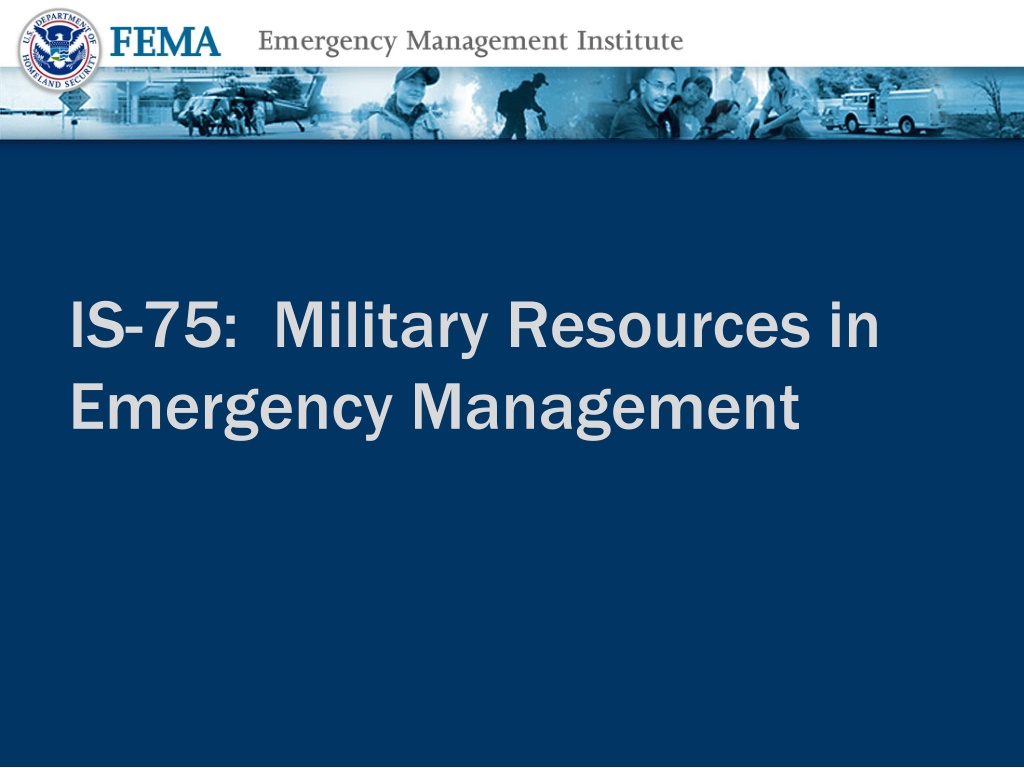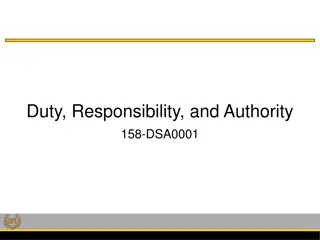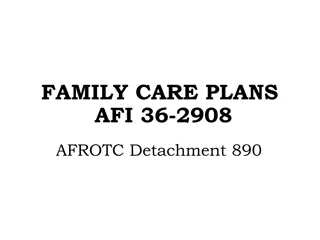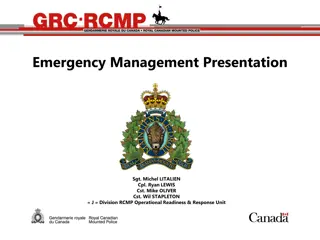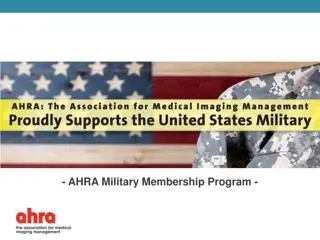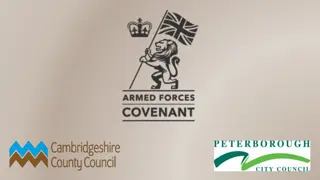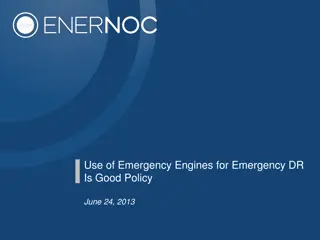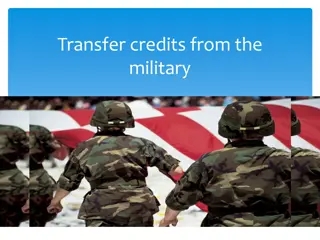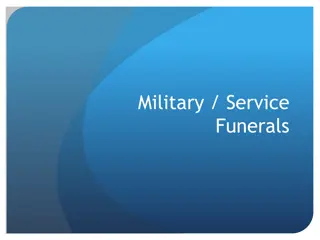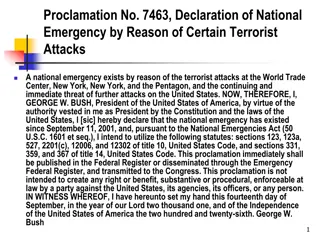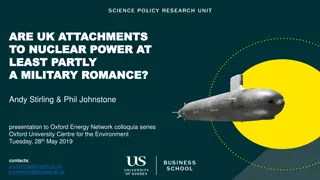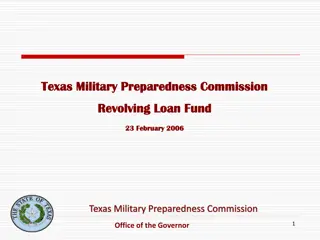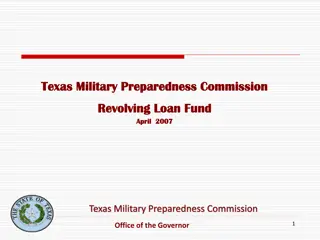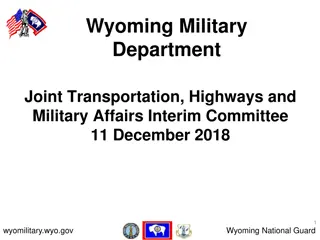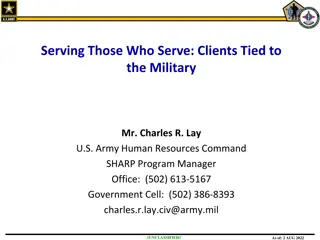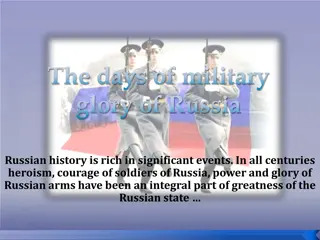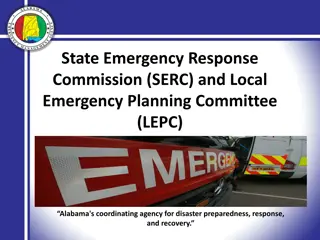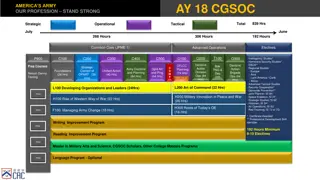Military Resources in Emergency Management Course Overview
This course provides a comprehensive overview of military resources in emergency management, covering topics such as command relationships, types of military response, integration of military support, and planning processes. Students will learn about the roles of local, state, and federal incident response assets, as well as the characteristics and capabilities of various military resources for emergency responses.
Download Presentation

Please find below an Image/Link to download the presentation.
The content on the website is provided AS IS for your information and personal use only. It may not be sold, licensed, or shared on other websites without obtaining consent from the author. Download presentation by click this link. If you encounter any issues during the download, it is possible that the publisher has removed the file from their server.
E N D
Presentation Transcript
IS-75: Military Resources in Emergency Management
Class Introductions Name Position/title Emergency response experience Expectations 2 Lesson 1: Types of Military Response and Integration of Military Support
Course Objectives At the end of this course, students should be able to: Describe the command relationships of local, tribal, state, and Federal incident response assets, including state and Federal military resources supporting civilian authorities Describe the types of military response available to states Describe the representatives, authorities, and assignments involved in a Federal military forces disaster response Identify the characteristics of the various military resources and their associated capabilities useful in an emergency response Describe the process for developing a Military Support Emergency Support Function (ESF) annex for your jurisdiction Describe the planning products resulting from the planning process 3 Lesson 1: Types of Military Response and Integration of Military Support
Course Agenda 4 Lesson 1: Types of Military Response and Integration of Military Support
Course Agenda (continued) 5 Lesson 1: Types of Military Response and Integration of Military Support
Course Administrative Details Breaks Lunch Emergency exit locations Restroom locations 6 Lesson 1: Types of Military Response and Integration of Military Support
Lesson 1: Types of Military Response and Integration of Military Support
Topics Covered The following topics are covered in this lesson: Defense Support of Civil Authorities (DSCA) Levels of Response Types of Military Response Representatives in a Federal Response Tribal Governments in Emergency Response Authorities for Federal Response Mission Assignment Process Pre-Scripted Mission Assignments 8 Lesson 1: Types of Military Response and Integration of Military Support
Objectives After completing this lesson, you will be able to: Describe the command relationships of local, tribal, state, and Federal incident response assets, including state and Federal military resources supporting civilian authorities Describe the types of military response available to states Describe the representatives, authorities, and assignments involved in disaster response by Federal military forces 9 Lesson 1: Types of Military Response and Integration of Military Support
Incident Response Process: Overview Begins with first responders at the local level Assistance may be needed from regional and/or state response organizations If escalated to Federal level, DoD forces may support civilian efforts Military serves a secondary role in supporting disaster incidents Note: DoD s primary mission is homeland security and homeland defense . 10 Lesson 1: Types of Military Response and Integration of Military Support
Incident Response Process: Overview (continued) Understand roles and authorities pertaining to Defense Support of Civil Authorities (DSCA) Build relationships with military resources Note: In some states, the state emergency management office is part of the state s Military Department . 11 Lesson 1: Types of Military Response and Integration of Military Support
Defense Support of Civil Authorities 12 Lesson 1: Types of Military Response and Integration of Military Support
Defense Support of Civil Authorities (continued) Evaluation criteria: Legality Lethality Risk Cost Appropriateness Readiness 13 Lesson 1: Types of Military Response and Integration of Military Support
Levels of Response Levels of response may include: Local/Tribal Regional State Federal 14 Lesson 1: Types of Military Response and Integration of Military Support
Presidential Actions Related to Federal Response Other levels of response include: Major Disaster Declaration Emergency Declaration 15 Lesson 1: Types of Military Response and Integration of Military Support
Types of Military Response Four main types of military response are available to states: Mutual Aid Assistance Agreements Immediate Response Authority (IRA) Deployment of state military resources (National Guard) Federal military forces disaster response 16 Lesson 1: Types of Military Response and Integration of Military Support
Activity: Types of Military Response Read the descriptions and examples for your assigned response(s). 17 Lesson 1: Types of Military Response and Integration of Military Support
Mutual Aid Assistance Agreements Regional firefighting mutual aid agreements DoD Instruction 6055.06 Emergency Management Assistance Compact (EMAC) Memorandum of Agreement (MOA)/Memorandum of Understanding (MOU) 18 Lesson 1: Types of Military Response and Integration of Military Support
Immediate Response Authority 19 Lesson 1: Types of Military Response and Integration of Military Support
Deployment of Military Resources - National Guard National Guard is first line of military response to most incidents Forces typically in State Active Duty (SAD) status 20 Lesson 1: Types of Military Response and Integration of Military Support
Deployment of Military Resources State Defense Forces 24 states authorize a state defense force Strictly state entities, not part of DoD Authorized to wear military uniform assigned by Adjutant General of the state 21 Lesson 1: Types of Military Response and Integration of Military Support
Federal Military Forces Disaster Response Presidential disaster declaration under the Stafford Act Primary Federal agency coordinates with the Defense Coordinating Officer (DCO) Combatant commander develops concept of operations and support Secretary of Defense designates supported combatant commander 22 Lesson 1: Types of Military Response and Integration of Military Support
Representatives in a Federal Response SCO - State Coordinating Officer FCO - Federal Coordinating Officer DCO - Defense Coordinating Officer DCE - Defense Coordinating Element EPLO - Emergency Preparedness Liaison Officer 23 Lesson 1: Types of Military Response and Integration of Military Support
Tribal Governments in Emergency Response Tribal governments are responsible for coordinating resources to address actual or potential incidents Tribal leaders will seek additional assistance when necessary Tribal governments can deal directly with the Federal government 24 Lesson 1: Types of Military Response and Integration of Military Support
Authorities for Federal Response Stafford Act Economy Act Posse Comitatus Act Insurrection Act 25 Lesson 1: Types of Military Response and Integration of Military Support
Activity: Authorities for Federal Response Read descriptions and examples for each Act Complete the activity worksheet 26 Lesson 1: Types of Military Response and Integration of Military Support
Mission Assignment Process 27 Lesson 1: Types of Military Response and Integration of Military Support
Mission Assignment Process MA - Request assistance from the DoD Provide reimbursement for direct assistance DCO determines if requirement can be fulfilled 28 Lesson 1: Types of Military Response and Integration of Military Support
Pre-Scripted Mission Assignments Facilitates a more rapid coordination process Specify what type of assistance is required Identify a statement of work Provide projected cost 29 Lesson 1: Types of Military Response and Integration of Military Support
Pre-Scripted Mission Assignments (continued) 30 Lesson 1: Types of Military Response and Integration of Military Support
Activity: Incident Response Challenge in New Madrid Review the Challenge in New Madrid scenario Prepare a brief review to share with the class 31 Lesson 1: Types of Military Response and Integration of Military Support
Activity Feedback: Local/Tribal Emergency Manager Group Questions 1. What types of military response will you request to assist your population and response agencies, and how will you access each type of military response? 2. Which type of DoD military responder would be able to conduct law enforcement operations? 3. Taking CARRL into account, what are some of the specific factors that may determine whether a particular military unit is mobilized to assist in the response? Lesson 1: Types of Military Response and Integration of Military Support 32
Activity Feedback: State Emergency Manager Group Questions 1. What types of military response will you request to assist your population and response agencies, and how will you access each type of military response? 2. Which type of military responder would be able to augment law enforcement operations? 3. Given the Presidential Disaster Declaration and Stafford Act provisions, what is the process to request Federal (Title 10) military forces for disaster response operations for greater than 72 hours? 33 Lesson 1: Types of Military Response and Integration of Military Support
Activity Feedback: State Emergency Manager Group Questions (continued) 4. Given a Presidential disaster declaration for a Federal response under the provisions of the Stafford Act for a disaster event, must all responding military forces fall under the control of the appointed Defense Coordinating Officer(s)? 34 Lesson 1: Types of Military Response and Integration of Military Support
Lesson Summary Military support must be requested by civilian authorities Title 10 military forces must be directed by the Secretary of Defense or the President The military forces role is to support other organizations 35 Lesson 1: Types of Military Response and Integration of Military Support
Questions? Lesson 1: Types of Military Response and Integration of Military Support 36
Lesson 2: Military Resources and Capabilities
Topics Covered The following topics are covered in this lesson: U.S. Military Services Military Culture Federal Executive Department Control of the U.S. Military Services Components of the U.S. Military Services Other U.S. Uniformed Services Auxiliaries to the Military Services Military Capabilities Useful for Emergencies Incident Support Base (ISB) Possible Missions 38 Lesson 2: Military Resources and Capabilities
Objective After completing this lesson, you will be able to identify the characteristics of the various military resources and their associated capabilities useful in an emergency response. 39 Lesson 2: Military Resources and Capabilities
U.S. Military Services United States Army United States Navy United States Air Force United States Marine Corps United States Coast Guard 40 Lesson 2: Military Resources and Capabilities
Military Culture Each of the services has a generalized culture, but there are notable exceptions. 41 Lesson 2: Military Resources and Capabilities
Activity: Military Culture 42 Lesson 2: Military Resources and Capabilities
Federal Executive Department Control of the U.S. Military Services Department of Defense Army Navy Air Force Marines Marines Department of Homeland Security Coast Guard Coast Guard Department of Defense Army Department of Homeland Security Navy Air Force 43 Lesson 2: Military Resources and Capabilities
U.S. Army Corps of Engineers Part of the active Army as a major command Dual - purpose - civil works and military engineering programs Involved in public works related to the Nation s waterways and coastal areas 44 Lesson 2: Military Resources and Capabilities
Components of the U.S. Military Services 45 Lesson 2: Military Resources and Capabilities
Activity: Components of the U.S. Military Read descriptions and example responses for each component Complete the activity worksheet 46 Lesson 2: Military Resources and Capabilities
Military Forces Legal Statuses 47 Lesson 2: Military Resources and Capabilities
Other U.S. Uniformed Services United States Public Health Service (USPHS) Commissioned Corps National Oceanographic and Atmospheric Agency (NOAA) Commissioned Corps 48 Lesson 2: Military Resources and Capabilities
Auxiliaries to the Military Services Civil Air Patrol (CAP) U.S. Coast Guard Auxiliary (USCGA) Military Auxiliary Radio System (MARS) 49 Lesson 2: Military Resources and Capabilities
Military Capabilities Useful for Emergencies General Medical Special 50 Lesson 2: Military Resources and Capabilities
